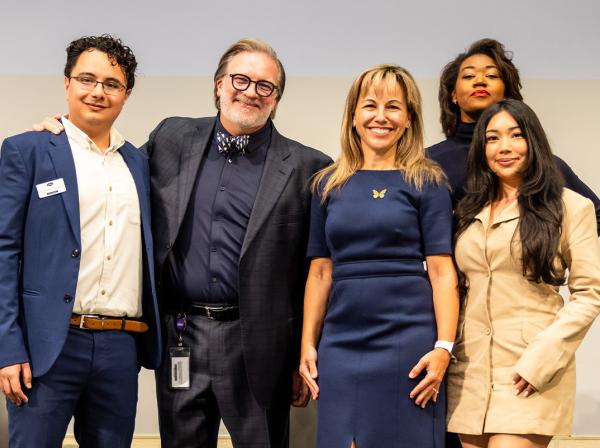A St. Edward’s McNair Scholar’s Journey to Her PhD
Victoria Rodriguez ’11 stood at the lectern and surveyed the upturned faces in the campus center ballroom.
Dessert had been served, coffee had been poured, and she was nearing the end of her speech. It felt surreal to be the keynote speaker at the University of San Diego McNair Scholars awards banquet.
But it also felt right: Seven years ago, she had been in these students’ shoes. Like many of them, she had celebrated being the first in her family to graduate from college — with a Bachelor of Arts in Psychology from St. Edward’s — and to get accepted to a graduate program. As a postdoctoral fellow at USD and an alumna of the McNair Scholars program at St. Edward’s, Rodriguez was a natural choice to speak at the end-of-year luncheon.
The honored guests, the graduating seniors, numbered only 17. But the ballroom was packed with their faculty mentors, family members and friends, who perfectly illustrated the point Rodriguez was about to make. She took a deep breath and began the last part of her speech, the one that had made her tear up every time she practiced on the phone with her mom back in San Antonio.
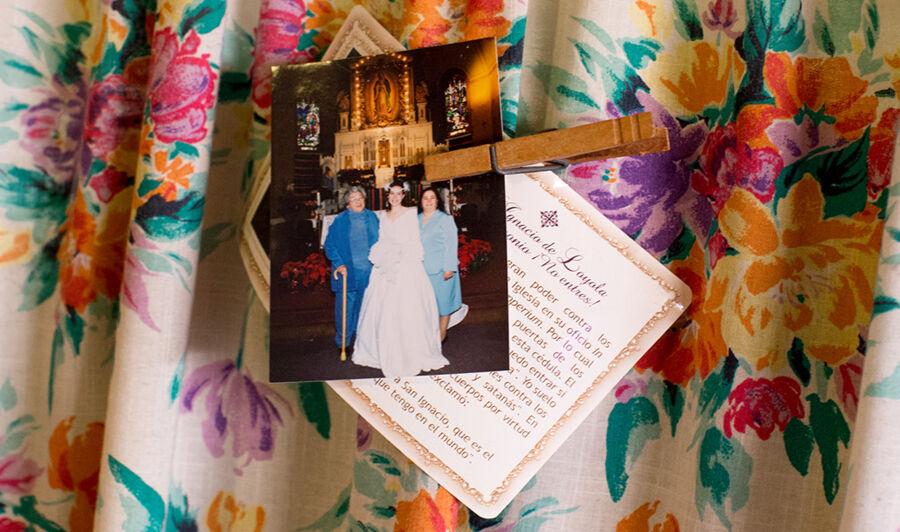
“When I was really struggling my second year at Stanford, I called my mom to say what a hard time I was having,” she began. “I remember my mom saying that, because she had never been to graduate school — or finished college — she couldn’t help me with my academics. So she told me to close my eyes and picture everyone from back home: her, my late grandma, my uncles, aunts and cousins; my ancestors; people from my church; and people from St. Edward’s. She said, ‘All of their hopes and dreams — and all of your ancestors’ hopes and dreams — rest on you. On your shoulders. But I want you to also picture them holding you up, backing you up, supporting you. We are all rooting for you. We all believe in you.’
“That gave me, and still gives me, motivation to keep going. You are all the product of your parents’ hopes and dreams, which is not always an easy burden. But remember, you have the support of your ancestors and of your community holding you up, no matter where you end up.”
After the applause, one of the McNair Scholars whom Rodriguez had taught that year approached her.
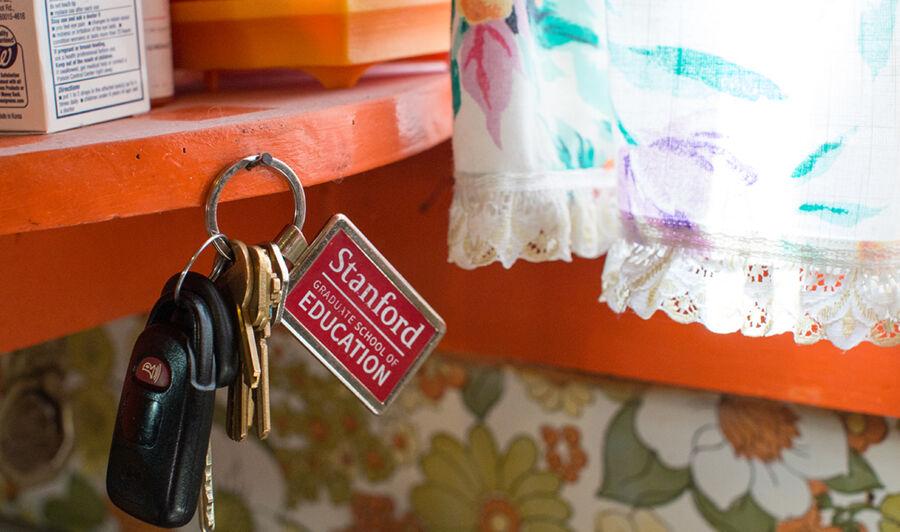
“You made me cry, Professor,” she said, smiling with damp eyes.
“Good!” Rodriguez joked. “At least I wasn’t the only one.”
As she dug in her purse for a tissue, her fingers grazed her keychain, and for a moment she felt the tears well up again. It was a simple keychain, 2 inches wide, with white letters reading Stanford Graduate School of Education set against a cardinal red. People probably thought she carried it because she was proud of the PhD she’d earned there last year. She was. But, like her journey to the PhD itself, the story was more complicated and more bittersweet.
Embracing Opportunity
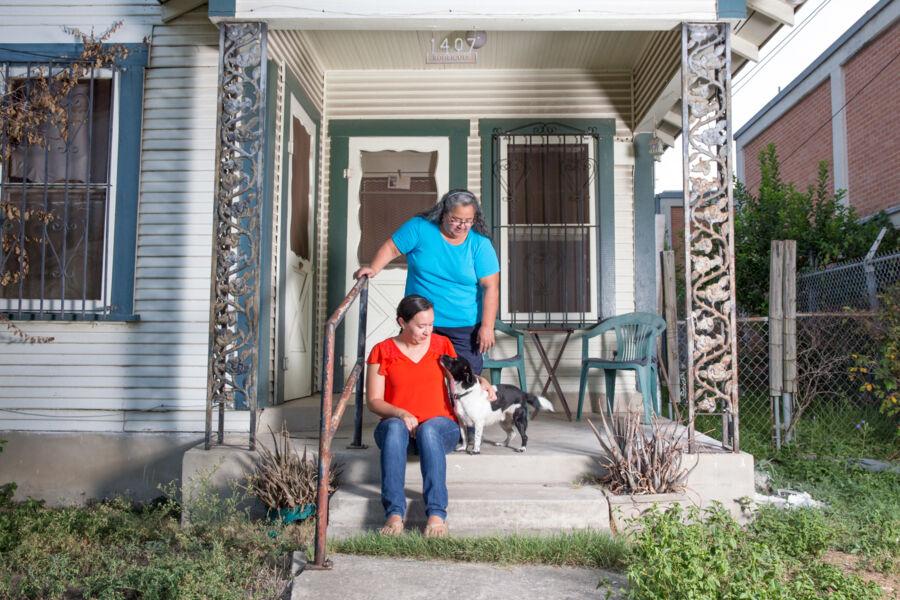
Rodriguez grew up in the green-and-white frame house her great-great-grandfather had built on the west side of San Antonio. She shared the house with her mother and grandmother, and every Sunday, all three walked down the block to Our Lady of Guadalupe, the church that served the predominantly working-class, Latinx neighborhood where Rodriguez also attended Catholic school. The family was so involved in the church that, when Rodriguez finished eighth grade, the priests offered her a scholarship to attend a Catholic high school with an outstanding academic reputation.
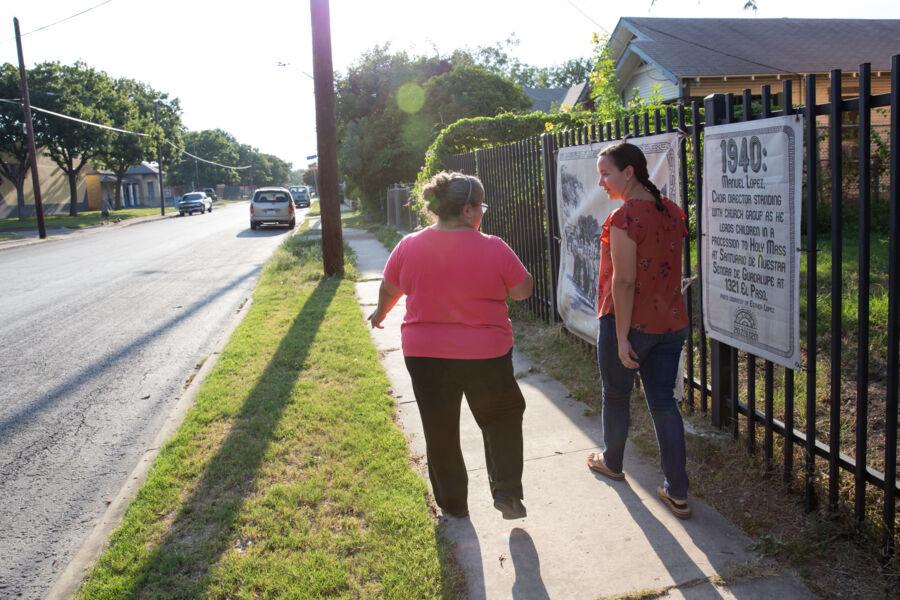
Rodriguez had always been academically inclined — even as a kid she’d turned up her nose at the children’s section of the library, preferring to browse the adult stacks — and the high school had a challenging curriculum. But she felt hopelessly out of place. As parents picked up their children after the first day of school, she counted each Lexus and Porsche as it pulled up to the curb.
Unlike her classmates, she didn’t have a computer at home, so she handwrote her papers and typed them in the school library. When it was time to fill out the online application for federal financial aid, called the FAFSA, she and her mom spent a Saturday at her neighborhood branch library, steeped in its old-books-and-animal-crackers smell. It took all day: The library restricted internet use to 30-minute increments, so the women would work furiously, only to have their session time out. After waiting in line, they’d tackle the form again.
At school, Rodriguez asked if anyone else thought the FAFSA was complicated. What’s the FAFSA? her classmates asked.
As uncomfortable as the social dynamics were, Rodriguez knew she had academic opportunities her neighborhood friends weren’t getting at their public school. It gnawed at her. “I thought, Why? It’s not fair that, just because I knew people at a church who were willing to pay for this experience, I got to have a better education than my friends from the same background. I knew I wanted to do something to pursue educational equity.”
Preparing for Graduate School
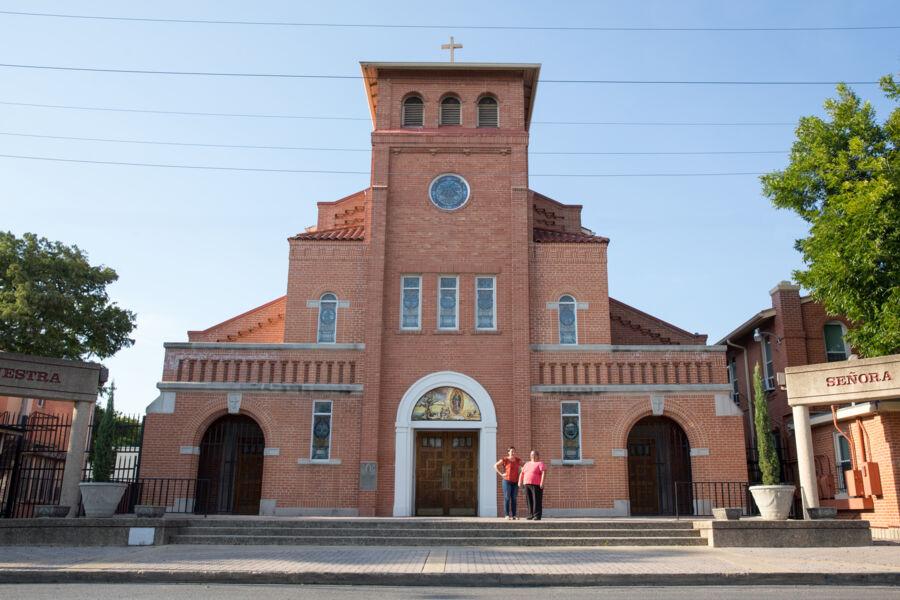
Rodriguez came to St. Edward’s with the help of scholarships and financial aid, including a job as office assistant to Social Work program directors Jean Frank and, later, Stacey Borasky. Conversations with professors in her Psychology major suggested that she’d need an advanced degree to influence education policy, but she knew nothing about graduate school. One day, in a psychology class, she heard a professor mention an initiative that prepared students for graduate-level research: the Ronald E. McNair Postbaccalaureate Achievement Program.
“McNair does a really good job helping low-income, first-generation students, who have minimal exposure to the graduate school application process,” says Sonia Briseno, assistant director of the St. Edward’s McNair program. “McNair provides that training, so the process is not as intimidating.”
The program is named for Ronald McNair, the second African-American to fly on a NASA space shuttle, who was killed when the Challenger exploded in 1986. Although McNair grew up poor in segregated South Carolina, he earned a PhD in physics from the Massachusetts Institute of Technology at age 26.
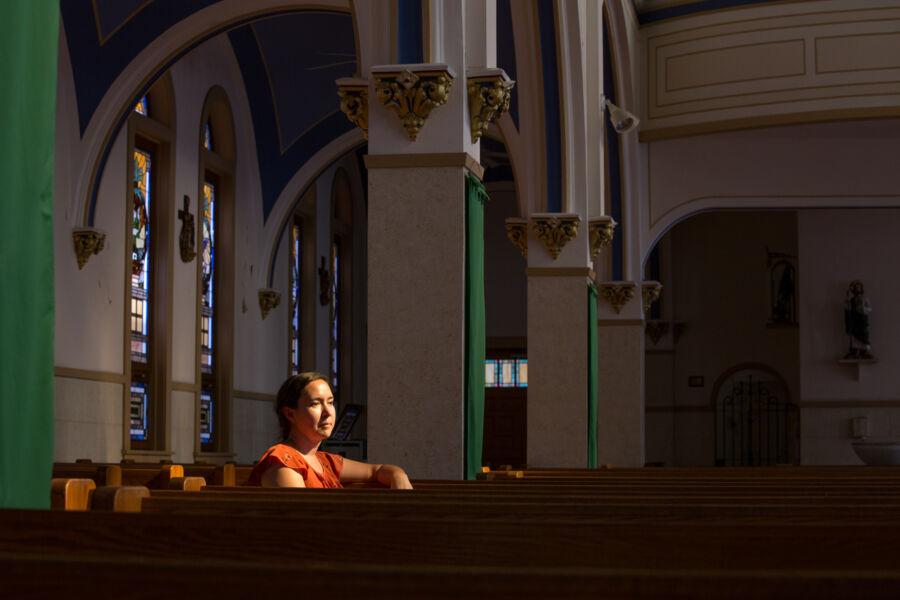
Active on 187 college campuses, the federally funded program aims to increase the number of students from disadvantaged backgrounds who earn doctorates. Today, Hispanic, black, American Indian and Alaskan Native students together earn roughly 15 percent of the nation’s PhDs, despite comprising a third of the nation’s population.
The program has two pillars: an intense, faculty-mentored research experience and mentorship through the graduate school application process. To become McNair Scholars, students must be low-income and first-generation college students, or come from ethnic groups underrepresented in graduate education. At St. Edward’s, about 35 students apply for 12 spots each year. Some apply as sophomores and conduct research over two summers; others enter the program as juniors and conduct research the summer between their junior and senior years.
In the spring, the students work with a faculty mentor on their literature reviews and research proposals. Summer begins with a two-day graduate school boot camp. Then, the students, with the help of their mentors, collect and analyze data, write a paper, and prepare it for presentation — all in a breakneck eight weeks. The program culminates with the McNair Scholars Program Research Symposium, where the students present their work for the first time.
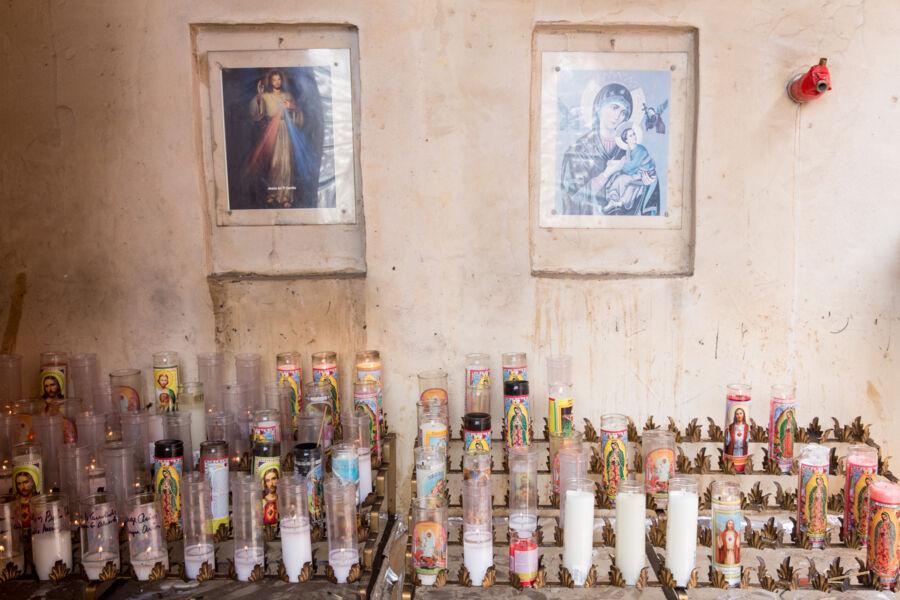
Meanwhile, they learn about graduate school: how to choose target schools, find funding, write a purpose statement and prepare for the graduate-school entrance exam. Throughout the school year, the group meets weekly for sessions about interviewing, networking, and managing money, and to hear advice — via Skype — from St. Edward’s McNair alumni currently enrolled in graduate programs. (Minus remembers one conversation that developed from a student’s question about the best part of graduate school. An alumnus who had worked multiple jobs throughout his undergraduate years answered with a touch of amazement that he was now being paid to go to school.) Seniors also shadow doctoral students at The University of Texas at Austin in their respective disciplines.
Since 2003, nearly 70 St. Edward’s McNair Scholars have earned master’s degrees, and 13 have earned PhDs. Another 20 are currently enrolled in doctoral programs.
“When we first started the program, these students were behind the eight ball because the majority didn’t grow up in a home where people went to college,” says Associate Vice President for Academic Affairs Molly Minus, the program’s director. “We often had to convince them of the value of earning a PhD. But as things have changed on our campus, and more students want to go to graduate school and are studying abroad, it doesn’t seem so out of reach. Our scholars want to pursue those opportunities, too.”
When Rodriguez was preparing her McNair summer research proposal, she knew she wanted to focus on racial and ethnic identity: how it develops, and how it impacts a person’s lived experience. She was intrigued by the studies psychologists Kenneth and Mamie Clark had conducted in the 1940s with African-American children in Clarendon County, South Carolina — an hour’s drive from where Ronald McNair would grow up. The Clarks showed the children white and black dolls and asked them questions: Which doll was “nice?” Which was “bad”? The children assigned negative qualities to the black dolls, a result the Supreme Court later cited in its Brown v. Board of Education decision as evidence of segregation’s harmful impacts.
Rodriguez wanted to design a similar study examining the racial and ethnic attitudes of Mexican-American children. Working with the Boys & Girls Clubs of Austin, she showed her subjects pictures of children in different ethnic groups and asked which children were smart? nice? mean? not smart? “Basically, what happened was the Mexican-American children reproduced the racial hierarchy of the United States,” she says. “The most likely group to get the negative adjectives attached to them was African-Americans, followed by the Latino picture, followed by the Asian-American picture, followed by the white picture. I was a little sad, but not surprised, I guess.”
Rodriguez applied to 15 graduate schools and was accepted to doctoral programs at the University of California, Los Angeles; the University of California, Berkeley; the University of Colorado Boulder; and The University of Texas at Austin, along with several master’s programs. She was waitlisted for the Stanford Graduate School of Education’s PhD in Developmental and Psychological Sciences — a result she considered an achievement in itself. Assuming she wouldn’t get in, Rodriguez focused her energy on visiting the other schools. Those universities, along with the McNair program, covered her travel costs.
But the day before she had to commit to a program, she received an email from Stanford: We are pleased to offer you admission and five years of full funding. You have 24 hours to accept or decline our offer. Rodriguez raced across campus to the Social Work office, where she assembled a team: then-Social Work chair Stacey Borasky and her research mentors, Professors of Psychology Jeannetta Williams and Sara Villanueva. Together they brainstormed a list of Stanford’s pros (full funding!) and cons (Rodriguez hadn’t visited). Nearly 24 hours later, Rodriguez replied to the email: I accept.
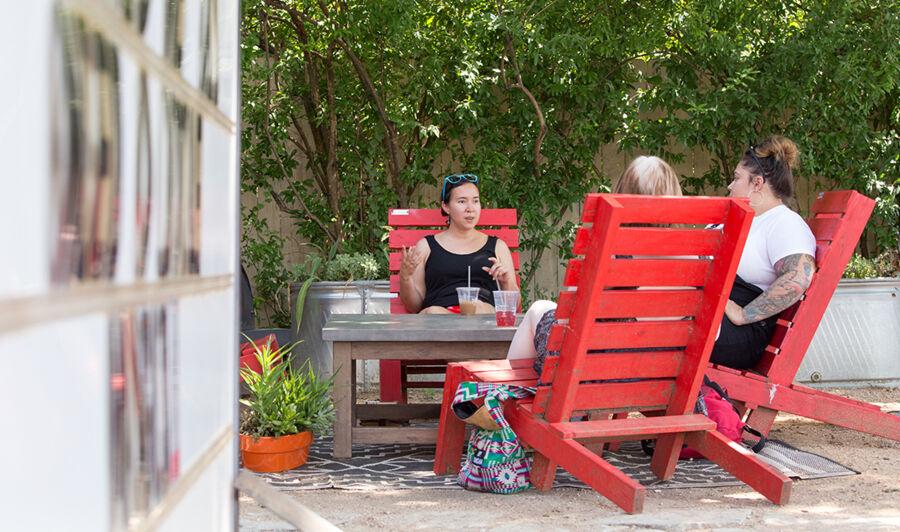
On a Tuesday morning in September, Rodriguez took a seat in her first class at Stanford, a seminar for all 27 first-year doctoral students in the Graduate School of Education. “Welcome to Stanford,” her professor said. “Let’s start with everyone introducing themselves and telling us what you did this past summer.”
One by one, her fellow students began to speak.
“I just wrapped up a master’s degree at Harvard University.”
“I spent the last few years working at the World Bank.”
“I just returned from doing a Fulbright in Norway.”
“I’m coming to Stanford after teaching high-school math for 20 years.”
Sitting in the back of the classroom, Rodriguez could feel her heartbeat accelerate. What. The. Heck. Am. I. Doing. Here. I spent my summer working at the Gap to save up money for my security deposit and first month’s rent in California. I’m the youngest person here, and the only Latina, and the only one who came straight from undergrad. When it was her turn to speak, she smiled. “This summer a friend and I went on a road trip to see the last manned shuttle launch at Cape Canaveral.” It was true, but it didn’t seem like enough.
That morning kicked off several rough years, marked by persistent impostor syndrome — something she’d been warned about by her McNair mentor, Jennifer Kay Leach, a PhD student at UT, who’d taken Rodriguez under her wing.
Eventually she confided her doubts to her friend and classmate Ingrid, an experienced teacher. “But, Victoria, can you imagine what you look like from everyone else’s perspective?” Ingrid responded. “They think, Wow, I had to go off and get a master’s at Harvard, and this girl just walks in straight from undergrad. She must be a super genius.”
Those words helped. “Because of McNair, I was one of the only ones in my cohort who already had research experience, had already done her own independent study, knew how to write a literature review and had done one before,” Rodriguez says. “That moment of reframing helped shift my perspective.”
In her last three years of the program, Rodriguez’s confidence gradually returned. For her dissertation, she studied college readiness in a charter school in a nearby low-income, predominantly Latinx neighborhood.
At her dissertation defense, a friend offered to bring the snacks that are customary for PhD candidates to provide the professors on their committee. “Let’s make it Mexican themed,” Rodriguez told him. “I’m Mexican, and there’s not a lot of that here at Stanford, so I want to assert my identity.” Her friend went a little overboard. Instead of simple coffee and pastries, the snacks table at Rodriguez’s defense was packed with hot Cheetos, popcorn with Tapatio hot sauce, chamoy-covered gummy bears, pan dulce, chips and salsa, guacamole, and fruit cups with Tajin chili-lime seasoning.
In Rodriguez’s research about the Latinx community in higher education, she’d learned that only 3 percent of PhDs in the United States are awarded to Latinas. “We’re unicorns,” Rodriguez thought at the time. “We’re rare.” The day of her dissertation defense, Rodriguez’s friends decorated the space in front of the lectern with a unicorn piñata.
Living Her Dream
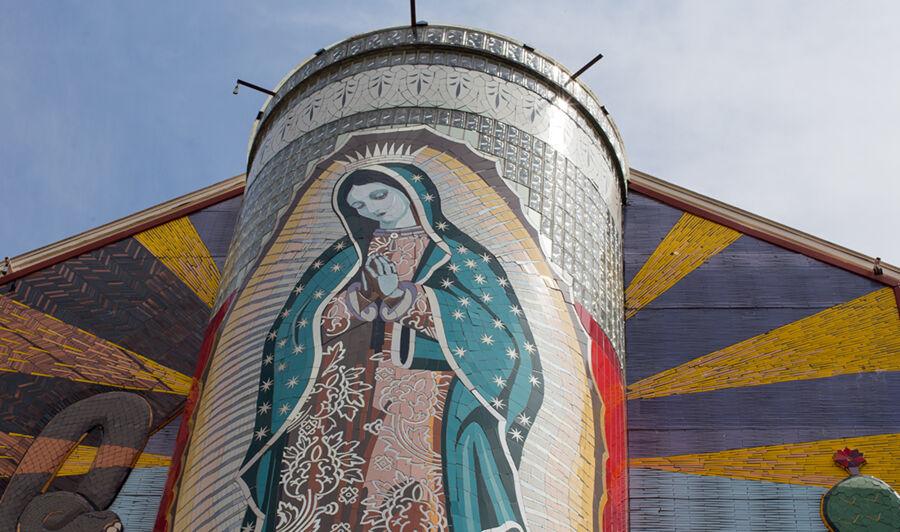
The San Diego sunshine was a stark contrast to the air-conditioned ballroom, and Rodriguez basked in its warmth as she walked across campus. On either side of the pedestrian plaza, cream-colored buildings topped with rust-red Spanish tile stood etched against the azure sky. Fountains burbled beneath the jacaranda trees spilling over with violet blooms.
After a year at USD, she still couldn’t get over the campus’s beauty. She had come to USD from Stanford as a Diversity Post-Doctoral Fellow, a position created to help the university recruit a more diverse faculty. The two-year position gave her extra time to teach and publish before applying for tenure-track professorships. It was a dream job. Students waved at her regularly from across the plaza: “Hey, Dr. Rodriguez.” “Hi, Professor.” It always took her a few seconds to realize she was the one they were addressing.
Last fall, her student Alexee Silva had asked for help writing a research proposal in hopes of going to graduate school. As Rodriguez talked with Silva, who had struggled at USD after transferring from a community college, she realized her student would be a perfect fit for the McNair program. Silva was accepted as a McNair Scholar and Rodriguez became her research mentor.
“My McNair experience is the reason I went to graduate school and part of the reason I was able to make it through,” Rodriguez says. “So this was me trying to give back the best way I knew how.”
As she walked toward her car, thinking of Silva and the other students she had seen at the luncheon, Rodriguez fished her keys out of her purse. The silver border of her keychain caught the light, and she looked down, reading the name of her alma mater, as she did several times each day.
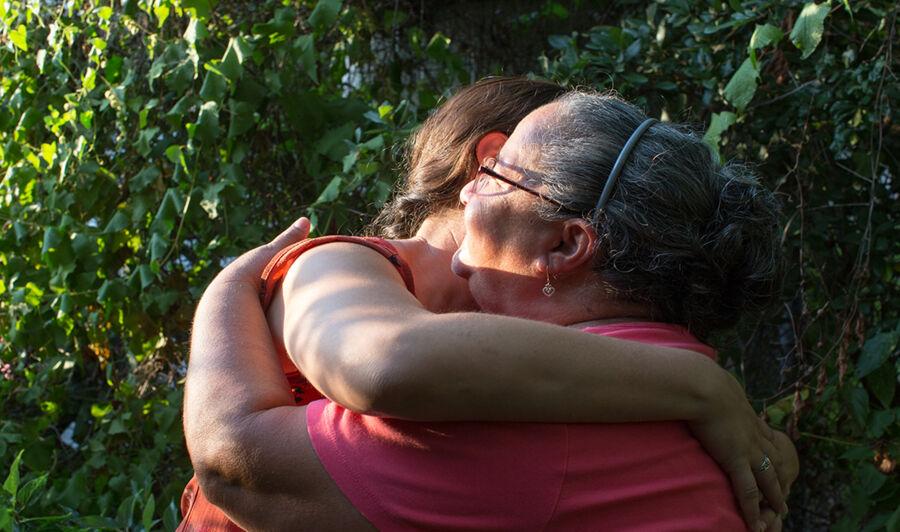
Six months before Rodriguez’s graduation, her mother had lost her job. Friends pooled their money to buy her a plane ticket to California so she could attend the ceremony. Still, the only graduation present her mother could afford was the $8 keychain. As the elder Rodriguez handed her daughter the box, she looked down. “I’m sorry this is all I can give you right now.”
Rodriguez shook her head. “No, mom — you’ve given me so much more. You’ve given me this.” She gestured at the Stanford campus. “I wouldn’t have gotten here if it wasn’t for you and all the sacrifices you made for me.”
The keychain had become a symbol of where Rodriguez had come from, and a constant reminder to help others the way she’d been helped. She closed her hand around it as she took in the view that never ceased to impress her: Mission Bay, and beyond it, the blue Pacific Ocean. For an extra moment she stood and watched the sun sparkle on the waves, all the way to where the ocean met the sky.
Photography by Whitney Devin ’10
Videography by Morgan Printy MLA ’17

